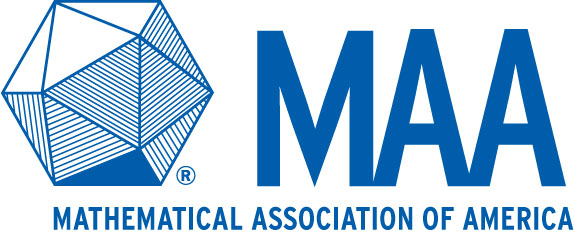Section 5.1 Abstracts: Invited Talks
Abstract 5.1.1. Michael Dorff: How mathematics is making Hollywood movies better.
What’s your favorite movie? Star Wars? Avatar? The Avengers? Frozen? What do these and all the highest-earning Hollywood movies since 2000 have in common? Mathematics! You probably didn’t think about it while watching these movies, but math was used to help make them. In this presentation, we will discuss how math is being used to create better and more realistic movies. Along the way, we will discuss some specific movies and the mathematics behind them. We will include examples from Disney’s 2013 movie Frozen (how to use math to create realistic-looking snow) to Pixar’s 2004 movie The Incredibles (how to use math to make an animated character move faster). Come and join us and get a better appreciation of mathematics and movies.
Abstract 5.1.2. Matthew Richey: Take what you have gathered from coincidence: Understanding—and Using — Randomness.
What does it mean to be random? We encounter randomness every day — it's part of how we talk about the gambing, card games. weather, sports, and even love. Despite being so familiar, randomness has proven to be an elusive idea to pin down. Even mathematicians have struggled to define randomness, leading to competing and sometimes conflicting definitions. Whatever it is, randomness is a driving force behind many modern computational algorithms. These algorithms — the Metropolis Algorithm, Markov chain Monte Carlo Methods, and others — use randomness as the secret ingredient that makes it possible to tackle famously difficult questions such as the Traveling Salesperson Problem. Using many pictures (and even a few embedded cultural references), this talk will look at the historical quest to define randomness and illustrate how randomness allows us to solve many of today's most challenging applied mathematics problems.
Abstract 5.1.3. Christopher Wrather: How to Freak Out your Clients with Machine Learning.
We share our experience developing the first predictive maintenance machine learning model for owner-flown light aircraft. The FEVA2 model (Failing Exhaust Valve Analytics) predicts the probability of a failing exhaust valve in piston aircraft engines. We describe the development of the model. But the primary focus is on our steps, missteps and lessons learned communicating the model’s predictions to clients. We learned that many nuances we take for granted as model developers are not obvious to clients, leading to misinterpretation and occasionally near panic. We describe the evolution of our messaging to better present the model’s predictions in a context that is both accurate and palatable.
Abstract 5.1.4. Michael Dorff: BIG jobs in math.
CareerCast.com, a job search website, ranks the top jobs each year. One occupation is almost always in the top 5 and some years is the #1 job — that occupation is mathematician! Unfortunately, many students and people don't know this. They think that the main (or only) career option for someone who studies mathematics is teaching. While teaching is a great career, there are hundreds of companies in business, industry, and government (BIG) hiring math majors. To get hired by one of these companies, students need to do more than just major in math. We will talk about some of the exciting things mathematicians in BIG are doing in their careers, and we will reveal the four things that recruiters say every math student should do to get a job.
